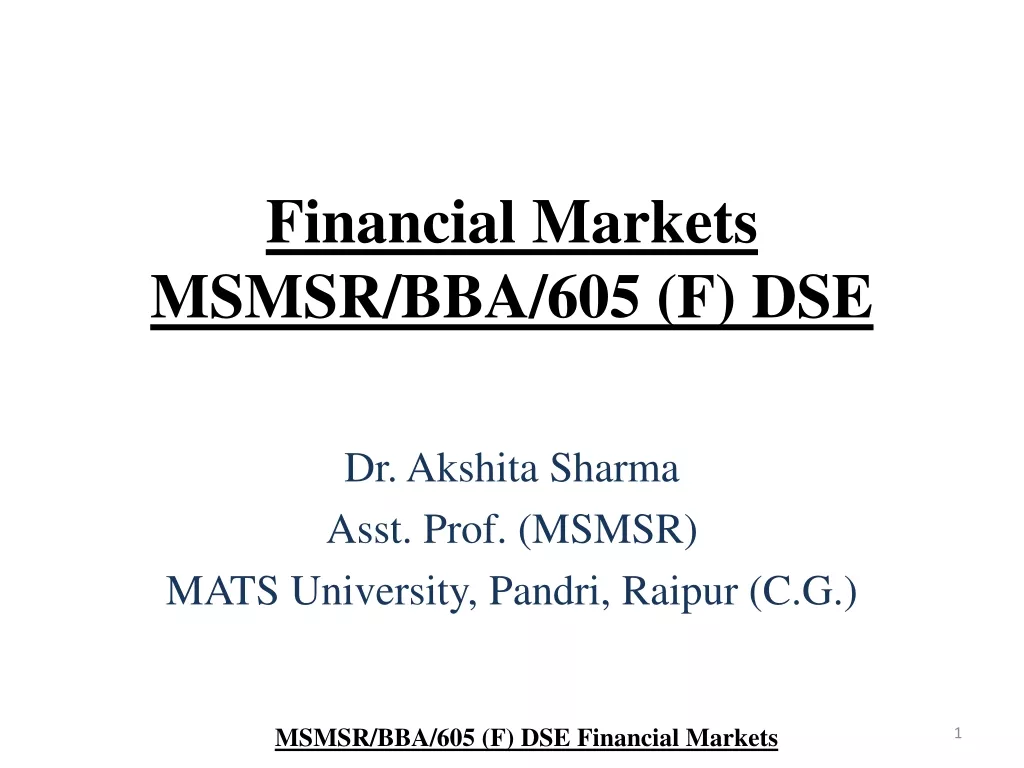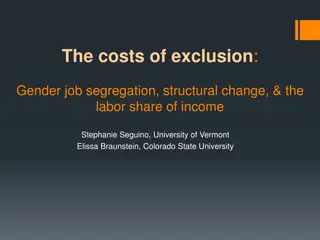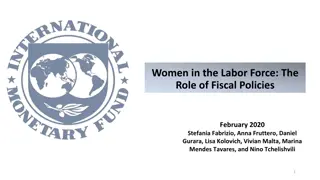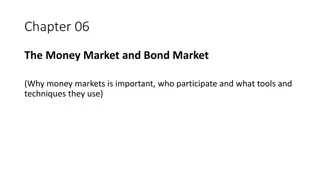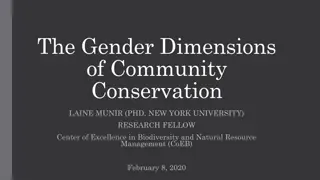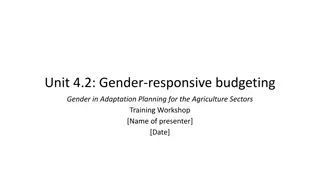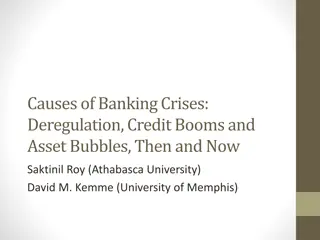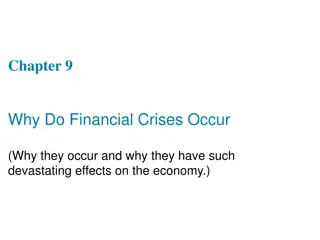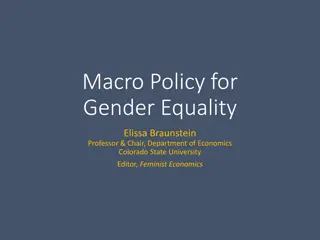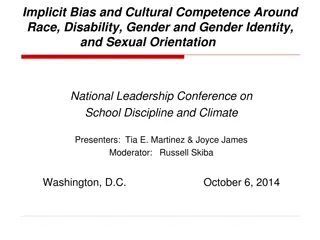Impacts of Financial Crises on Gender Disparities in Risk-Taking and Labor Markets
Exploring the effects of financial crises on gender differences in risk-taking behavior, labor market outcomes, and the disproportionate impact on individuals based on income and gender. Insights into how men and women respond to crisis signals and the potential implications for future economic trends.
Download Presentation

Please find below an Image/Link to download the presentation.
The content on the website is provided AS IS for your information and personal use only. It may not be sold, licensed, or shared on other websites without obtaining consent from the author.If you encounter any issues during the download, it is possible that the publisher has removed the file from their server.
You are allowed to download the files provided on this website for personal or commercial use, subject to the condition that they are used lawfully. All files are the property of their respective owners.
The content on the website is provided AS IS for your information and personal use only. It may not be sold, licensed, or shared on other websites without obtaining consent from the author.
E N D
Presentation Transcript
Hagsveifla og vinnumarkaur hrif konur og karla Katr n lafsd ttir PhD, lektor Vi skiptadeild H sk lans Reykjav k
Overview The current crisis is it as other crises or is this one different? The role of men in creating the current crisis How the labor market reacts Flexibility of labor markets-first round effects Second round effects budget cuts What is likely to happen in the coming years?
Impact of financial crises Recession lasts 2 years Unemployment rises for four years Real housing prices fall for five years Massive increases in government debt at end
The current crash Debora Spar president of Barnard College: One gender s crash Excessive risk taking in the financial sector. Women make up 60% of the workforce at Fortune 500 finance and insurance companies 17.9% of corporate officer positions none of the chief executive positions
Gender differences in risk taking Men are more willing to compete than women. Men are found to be more overconfident than women. Overconfident investors trade more frequently than rational investors. Men trade stocks more frequently than women. Women managers tend to take less extreme risks than their male peers.
Addressing warning signs Perhaps women respond differently to danger signals Brooksley Born called for greater disclosure and new rules to govern financial derivatives Sherron Watkins Enron executive to warn the CEO that the company was headed for trouble. Something that warrants further research.
Effects on the labor market Depends on flexibility of labor markets Finland s unemployment went up to nearly 20% Iceland s expected to stay close to 10% Reduced working hours (overtime, share of daytime) Unemployment Labor force participation rates Cut in nominal wages
Who gets hurt? People at the lower end of the income distribution. When it comes to wages women are generally harder hit than men. When it comes to employment men are hit worse by recession than women.
Sensitivity to economic cycle 1970-2005 200 175,6 180 160 140 123,8 119,9 120 106,7 100 80,3 79,9 71,1 80 68,0 54,2 60 40,4 40 20 0
Unemployment in Iceland 7 Men Women 6 5 4 3 2 1 0 1985 1987 1989 1991 1993 1995 1997 1999 2001 2003 2005 2007
Unemployment in Iceland 12 Karlar Konur 10 8 6 4 2 0 jan. '07 j l. '07 jan. '08 j l. '08 jan. '09 j l. '09 jan.'10 j l. '10
Second round effects The government has in many countries stepped in to refinance the financial sector. Increase in public sector debt. Slowdown in economy means increased public sector deficit. Many governments will be forced to cut public services and benefits. This will hurt women much more than men.
Unemployment in the UK 10 9 8 7 6 5 4 2007M01 2007M07 2008M01 2008M07 2009M01 2009M07 2010M01 2010M07 Total UK Female UK Male UK
What lies ahead? Opportunites in reducing the gender gap in the labor market. Difference in wages between men and women probably narrowed. Need to be open to changes in the structure of the labor market. Need to ensure that women and men share the power.


